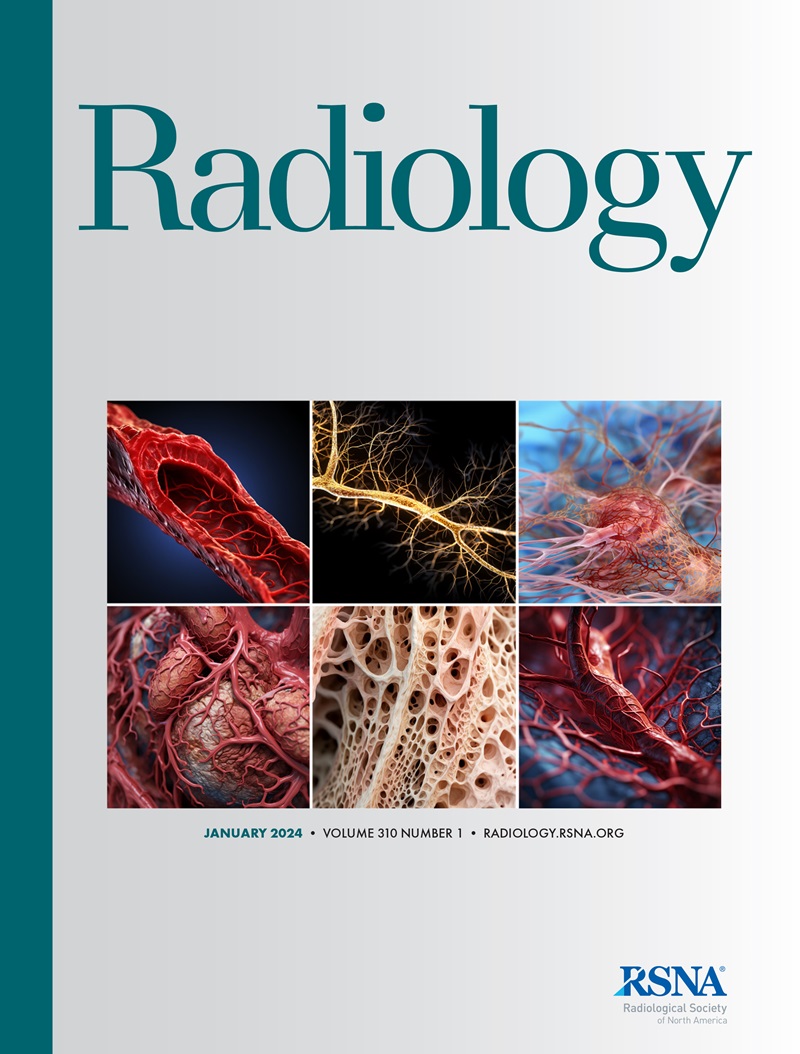Bin Jiang, Nancy Pham, Eric K van Staalduinen, Yongkai Liu, Sanaz Nazari-Farsani, Amirhossein Sanaat, Henk van Voorst, Ates Fettahoglu, Donghoon Kim, Jiahong Ouyang, Ashwin Kumar, Aditya Srivatsan, Ramy Hussein, Maarten G Lansberg, Fernando Boada, Greg Zaharchuk
求助PDF
{"title":"深度学习在急性缺血性脑卒中成像中的应用:系统回顾和叙述性总结。","authors":"Bin Jiang, Nancy Pham, Eric K van Staalduinen, Yongkai Liu, Sanaz Nazari-Farsani, Amirhossein Sanaat, Henk van Voorst, Ates Fettahoglu, Donghoon Kim, Jiahong Ouyang, Ashwin Kumar, Aditya Srivatsan, Ramy Hussein, Maarten G Lansberg, Fernando Boada, Greg Zaharchuk","doi":"10.1148/radiol.240775","DOIUrl":null,"url":null,"abstract":"<p><p>Background Acute ischemic stroke (AIS) is a major cause of morbidity and mortality, requiring swift and precise clinical decisions based on neuroimaging. Recent advances in deep learning-based computer vision and language artificial intelligence (AI) models have demonstrated transformative performance for several stroke-related applications. Purpose To evaluate deep learning applications for imaging in AIS in adult patients, providing a comprehensive overview of the current state of the technology and identifying opportunities for advancement. Materials and Methods A systematic literature review was conducted following Preferred Reporting Items for Systematic Reviews and Meta-Analyses guidelines. A comprehensive search of four databases from January 2016 to January 2024 was performed, targeting deep learning applications for imaging of AIS, including automated detection of large vessel occlusion and measurement of Alberta Stroke Program Early CT Score. Articles were selected based on predefined inclusion and exclusion criteria, focusing on convolutional neural networks and transformers. The top-represented areas were addressed, and the relevant information was extracted and summarized. Results Of 380 studies included, 171 (45.0%) focused on stroke lesion segmentation, 129 (33.9%) on classification and triage, 31 (8.2%) on outcome prediction, 15 (3.9%) on generative AI and large language models, and 11 (2.9%) on rapid or low-dose imaging specific to stroke applications. Detailed data extraction was performed for 68 studies. Public AIS datasets are also highlighted, for researchers developing AI models for stroke imaging. Conclusion Deep learning applications have permeated AIS imaging, particularly for stroke lesion segmentation. However, challenges remain, including the need for standardized protocols and test sets, larger public datasets, and performance validation in real-world settings. © RSNA, 2025 <i>Supplemental material is available for this article.</i></p>","PeriodicalId":20896,"journal":{"name":"Radiology","volume":"315 1","pages":"e240775"},"PeriodicalIF":12.1000,"publicationDate":"2025-04-01","publicationTypes":"Journal Article","fieldsOfStudy":null,"isOpenAccess":false,"openAccessPdf":"","citationCount":"0","resultStr":"{\"title\":\"Deep Learning Applications in Imaging of Acute Ischemic Stroke: A Systematic Review and Narrative Summary.\",\"authors\":\"Bin Jiang, Nancy Pham, Eric K van Staalduinen, Yongkai Liu, Sanaz Nazari-Farsani, Amirhossein Sanaat, Henk van Voorst, Ates Fettahoglu, Donghoon Kim, Jiahong Ouyang, Ashwin Kumar, Aditya Srivatsan, Ramy Hussein, Maarten G Lansberg, Fernando Boada, Greg Zaharchuk\",\"doi\":\"10.1148/radiol.240775\",\"DOIUrl\":null,\"url\":null,\"abstract\":\"<p><p>Background Acute ischemic stroke (AIS) is a major cause of morbidity and mortality, requiring swift and precise clinical decisions based on neuroimaging. Recent advances in deep learning-based computer vision and language artificial intelligence (AI) models have demonstrated transformative performance for several stroke-related applications. Purpose To evaluate deep learning applications for imaging in AIS in adult patients, providing a comprehensive overview of the current state of the technology and identifying opportunities for advancement. Materials and Methods A systematic literature review was conducted following Preferred Reporting Items for Systematic Reviews and Meta-Analyses guidelines. A comprehensive search of four databases from January 2016 to January 2024 was performed, targeting deep learning applications for imaging of AIS, including automated detection of large vessel occlusion and measurement of Alberta Stroke Program Early CT Score. Articles were selected based on predefined inclusion and exclusion criteria, focusing on convolutional neural networks and transformers. The top-represented areas were addressed, and the relevant information was extracted and summarized. Results Of 380 studies included, 171 (45.0%) focused on stroke lesion segmentation, 129 (33.9%) on classification and triage, 31 (8.2%) on outcome prediction, 15 (3.9%) on generative AI and large language models, and 11 (2.9%) on rapid or low-dose imaging specific to stroke applications. Detailed data extraction was performed for 68 studies. Public AIS datasets are also highlighted, for researchers developing AI models for stroke imaging. Conclusion Deep learning applications have permeated AIS imaging, particularly for stroke lesion segmentation. However, challenges remain, including the need for standardized protocols and test sets, larger public datasets, and performance validation in real-world settings. © RSNA, 2025 <i>Supplemental material is available for this article.</i></p>\",\"PeriodicalId\":20896,\"journal\":{\"name\":\"Radiology\",\"volume\":\"315 1\",\"pages\":\"e240775\"},\"PeriodicalIF\":12.1000,\"publicationDate\":\"2025-04-01\",\"publicationTypes\":\"Journal Article\",\"fieldsOfStudy\":null,\"isOpenAccess\":false,\"openAccessPdf\":\"\",\"citationCount\":\"0\",\"resultStr\":null,\"platform\":\"Semanticscholar\",\"paperid\":null,\"PeriodicalName\":\"Radiology\",\"FirstCategoryId\":\"3\",\"ListUrlMain\":\"https://doi.org/10.1148/radiol.240775\",\"RegionNum\":1,\"RegionCategory\":\"医学\",\"ArticlePicture\":[],\"TitleCN\":null,\"AbstractTextCN\":null,\"PMCID\":null,\"EPubDate\":\"\",\"PubModel\":\"\",\"JCR\":\"Q1\",\"JCRName\":\"RADIOLOGY, NUCLEAR MEDICINE & MEDICAL IMAGING\",\"Score\":null,\"Total\":0}","platform":"Semanticscholar","paperid":null,"PeriodicalName":"Radiology","FirstCategoryId":"3","ListUrlMain":"https://doi.org/10.1148/radiol.240775","RegionNum":1,"RegionCategory":"医学","ArticlePicture":[],"TitleCN":null,"AbstractTextCN":null,"PMCID":null,"EPubDate":"","PubModel":"","JCR":"Q1","JCRName":"RADIOLOGY, NUCLEAR MEDICINE & MEDICAL IMAGING","Score":null,"Total":0}
引用次数: 0
引用
批量引用

 求助内容:
求助内容: 应助结果提醒方式:
应助结果提醒方式:


